The only change when the difficulty level ramps up here is the number of features selected by each guard. As before, each pair of guards are concerned with a certain feature type (hair, eyes etc) - in the example below, the vertical pair choose hair and the horizontal pair choose eyes. However, rather than one guard selecting one characteristic from that type (i.e. only allowing glasses up the right-hand path), one guard selects two characteristics from that type, while Zoombinis with the remaining three characteristics go up the other path.
Initially, I couldn't see the connection between Very Very Hard and the other three levels of difficulty. On the only available half-decent walkthrough, I found the following advice:
Very Very Hard: One of the large rocks will not accept roughly half the Zoombinis for varied reasons; one of the small rocks will not accept roughly half the Zoombinis for varied reasons. These reasons usually are: Having 1 of 2 features, having a combination of 2 features, or having 1 of 3 features.
- One of the vertical and one of the horizontal guards have specific rules about which characteristics will be allowed, while the other guard in their pair allows the complement of that set - identical to the rule structure all the way through so far.
- The "rule picking" guards still pick two characteristics each, but there are two crucial differences between Very Hard and Very Vary Hard:
- Firstly, each guard picks two rules from different characteristic types - in the example below, the vertical guards care about hair and eyes, while the horizontal guards care about noses and feet.
- Secondly, each rule is now better worded as an undesirable characteristic - such as the left-hand guard refusing to admit springs or green noses in the example below. This leads to the player placing Zoombinis according to the features they don't have, which is a subtly different kind of thinking.
- The four rules picked by the two guard pairs completely cover each set of characteristic types in each puzzle - one guard picks two from hair, eyes, nose and feet, leaving the other guard with the remaining two characteristic types.
However, when I started to put the labelling and diagrams together, I noticed the little chap I've highlighted in yellow - he doesn't appear immediately problematic as he's not actually "breaking" any of the rules. However, with the rule set as it is, there's no explanation for why he's not in the bottom-left cave rather than bottom-right.
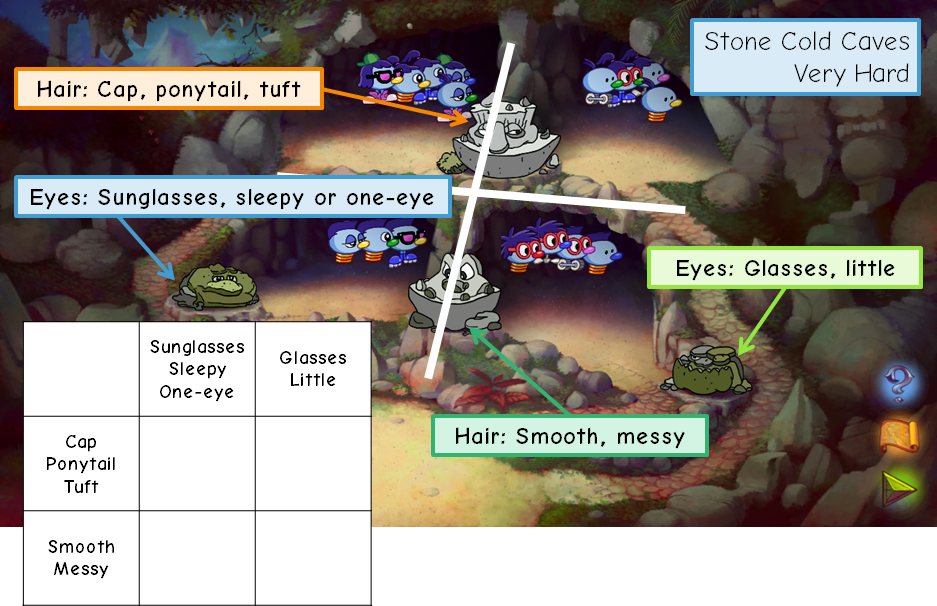
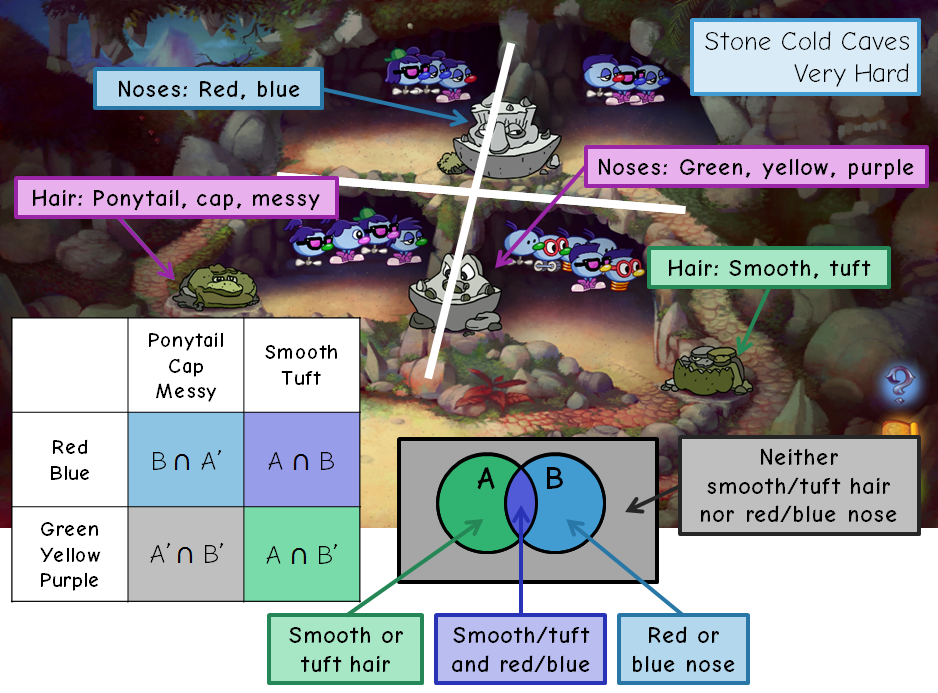

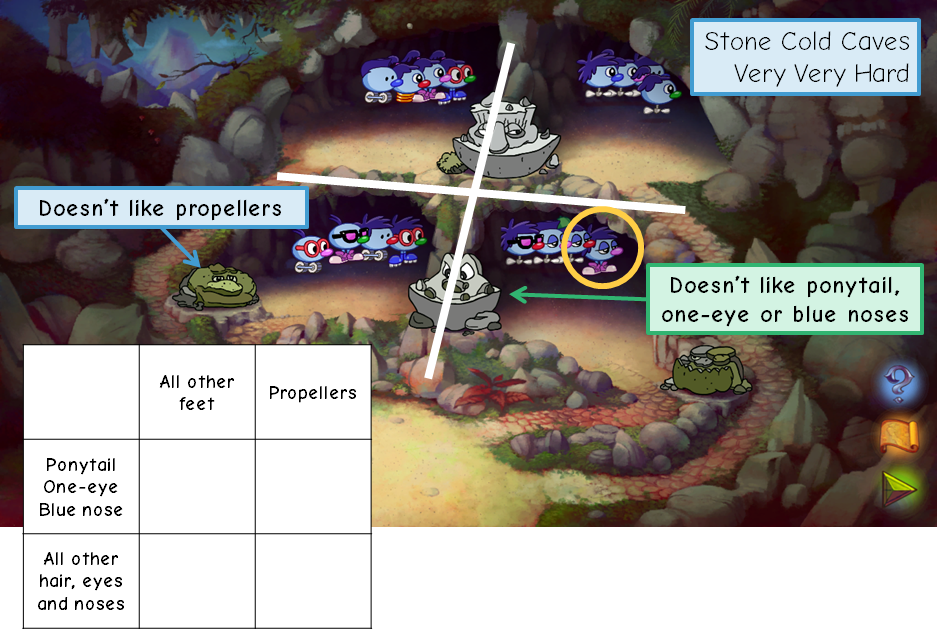
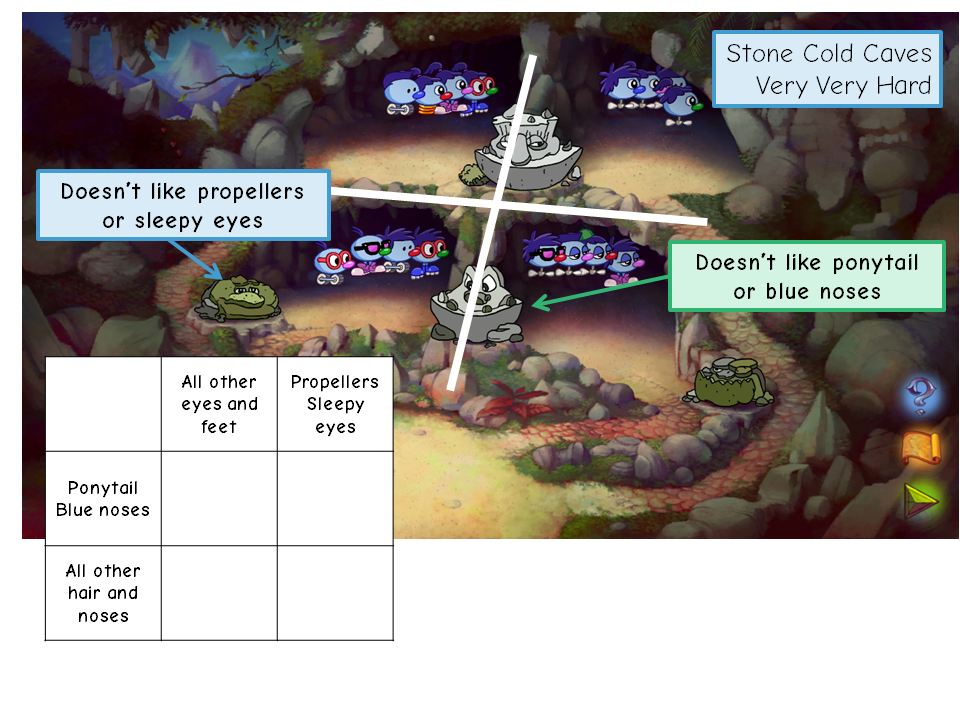
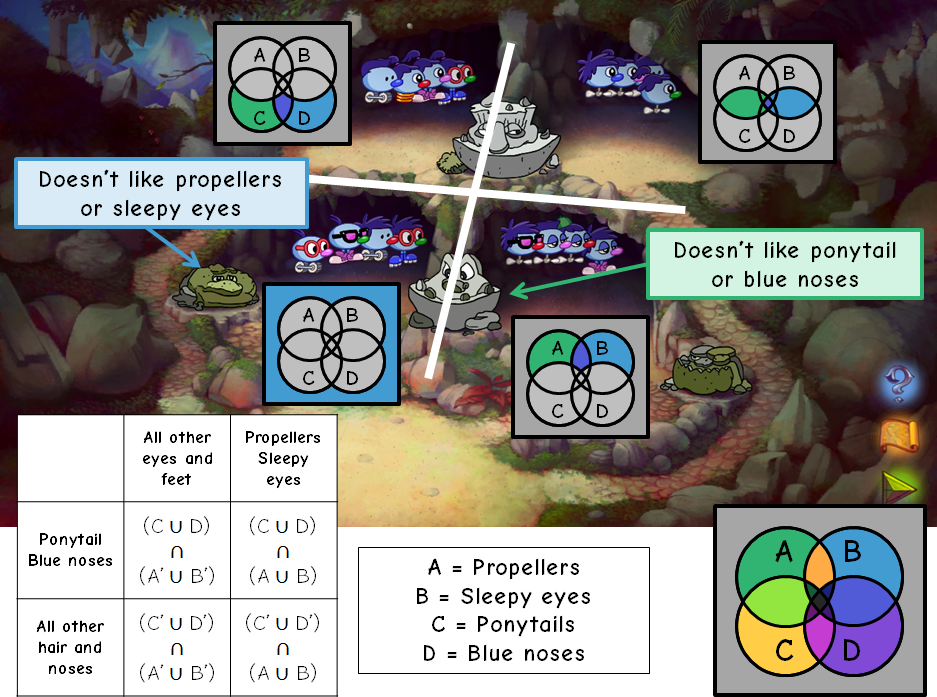
 RSS Feed
RSS Feed

Looks like a fun game!